What’s in the book Donald Trump doesn’t want you to read
IT’S the book the President tried to stop you from reading. Brimming with scandalous revelations, it’s not hard to see why.
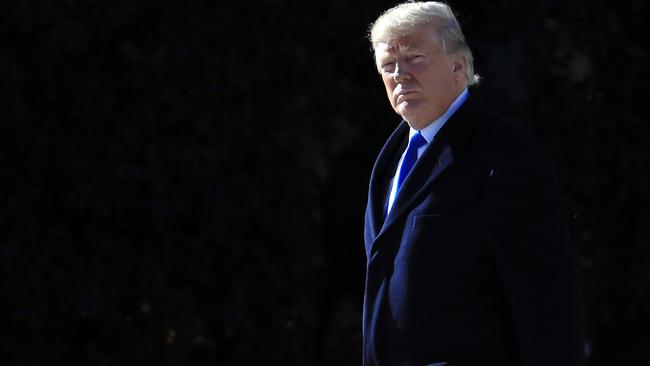
IT’S the scandalous book Donald Trump does not want you to read.
He was so incensed by its contents that he mounted a legal challenge to try to stop it from appearing on the shelves.
That attempt was thwarted overnight when Michael Wolff’s Fire and Fury: Inside the Trump White House was released to the American public — four days ahead of schedule.
Having now read all 300-plus pages, it’s not hard to see why Trump tried to block it. The book is brimming with so much gossipy detail, palace intrigue and back-stabbing that it reads more like a soap opera script than a piece of political journalism.
And it all adds up to a damning assessment of the 45th President of the United States. If Wolff’s account is to be believed, America placed a bad-tempered child into the Oval Office, someone who is intellectually and emotionally ill-equipped for the role he was elected to perform.
The devastating blows to Trump’s character come thick and fast, page after page, from tales of him hitting on his friends’ wives and zoning out due to boredom in meetings with world leaders, to his staff members ratting him out to the press and tearing at each others throats.
I authorized Zero access to White House (actually turned him down many times) for author of phony book! I never spoke to him for book. Full of lies, misrepresentations and sources that don’t exist. Look at this guy’s past and watch what happens to him and Sloppy Steve!
— Donald J. Trump (@realDonaldTrump) January 5, 2018
The White House says the book is a “complete fantasy”, riddled with errors, but many of the stories in the book fit neatly with other accounts that have leaked out since Trump took office.
Wolff, who says he drew from more than 200 interviews with administration insiders, admits that the truth can be a hard thing to get a handle on inside the Trump White House, given so many factions are competing to influence the man in charge. Ultimately, he says, it is up to readers to make up their own minds.
“Many of the accounts of what has happened in the Trump White House are in conflict with one another; many, in Trumpian fashion, are baldly untrue,” Wolff writes.
“Those conflicts, and that looseness with the truth, if not with reality itself, are an elemental thread of the book.”
With that in mind, here are the juiciest details from the bombshell book.
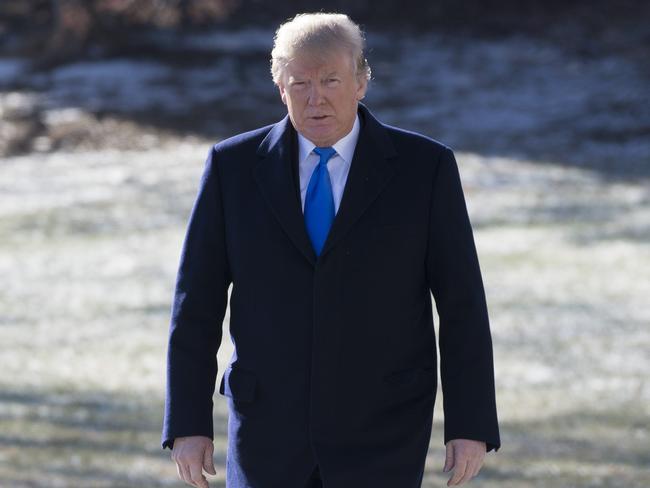
TRUMP IS ‘LIKE A CHILD’
Perhaps the most damaging part of the book is the claim that Trump possesses a staggering ignorance of what it takes to be president.
Wolff says that the President refuses to read anything, is unable to pay attention during crucial briefings and has no interest in legislation.
“To say that he knew nothing — nothing at all — about the basic intellectual foundations of the job was a comic understatement,” the book says.
For example, adviser Sam Nunberg was sent to explain the Constitution to Trump and this is what happened.
“I got as far as the Fourth Amendment before his finger is pulling down on his lip and his eyes are rolling back in his head,” Nunberg said.
Wolff writes that Trump lacks the “executive function” to do the job.
“His brain seemed incapable of performing what would be essential tasks in his new job.
“He had no ability to plan and organise and pay attention and switch focus ... on the most basic level he simply could not link cause and effect.”
Trump’s former deputy chief of staff Kate Walsh is on the record saying that trying to set an agenda was “like trying to figure out what a child wants”.
Wolff writes: “Trump didn’t read. He didn’t really even skim. If it was print, it might as well not exist. Some believed for all practical purposes he was no more than semiliterate ... But not only didn’t he read, he didn’t listen. He preferred to be the person talking ... What’s more he had an extremely short attention span.”
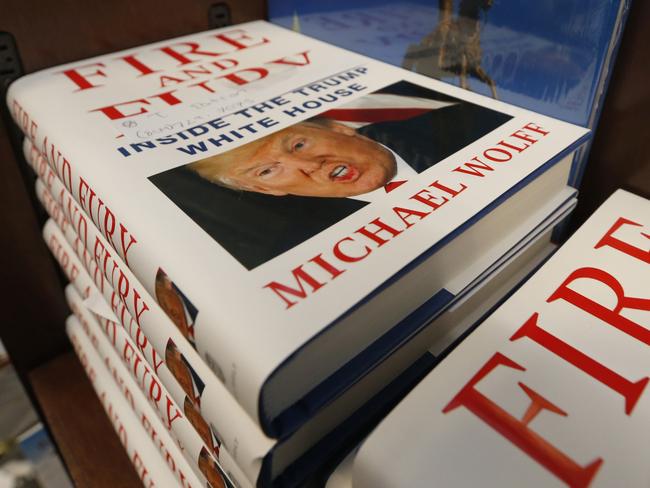
TRUMP AND MELANIA LIVE SEPARATE LIVES
While much of the book focused on the political players, a portion is spent examining Trump as a husband and a father.
“He and Melania spent relatively little time together. They could go days at a time without contact, even when they were both in Trump Tower,” Wolff writes.
“An absent father for his first four children, Trump was even more absent for his fifth, Barron.”
Trump proudly refers to Melania as a “trophy wife” to others and openly admires her looks.
While she was privately assured by minders that Trump had no chance of winning the election, her “terror and torment mounted” as the campaign wore on.
“But the prospect of her husband’s actually becoming president was, for Melania, a horrifying one,” Wolff writes.
“Shortly after 8pm on election night, when the unexpected trend — Trump might actually win — seemed confirmed, Don Jr told a friend that his father … looked as if he had seen a ghost. Melania was in tears — and not of joy”.

DOMESTIC LIFE IN THE BIG WHITE BUILDING
Trump’s adjustment to living in the White House was a difficult one, given that he had enjoyed a palatial space inside Trump Tower in Midtown Manhattan since 1983.
A noted germaphobe, the President hates living in the old building and is “scared” by its roach and rodent problem.
Early in his presidency he regularly retreated into his own bedroom — separate from the one Melania slept in — locking the door and ordering staff not to touch anything, especially not his toothbrush.
“He had a longtime fear of being poisoned, one reason why he liked to eat at McDonald’s — nobody knew he was coming and the food was safely pre-made,” Wolff writes.
The book depicts him scoffing cheeseburgers in bed at night while watching cable TV news across three screens and venting to powerful friends on the phone for hours on end about his inept staff and the unfair media.
The book also says he lied about his height to keep from having a body mass index that would label him as obese.
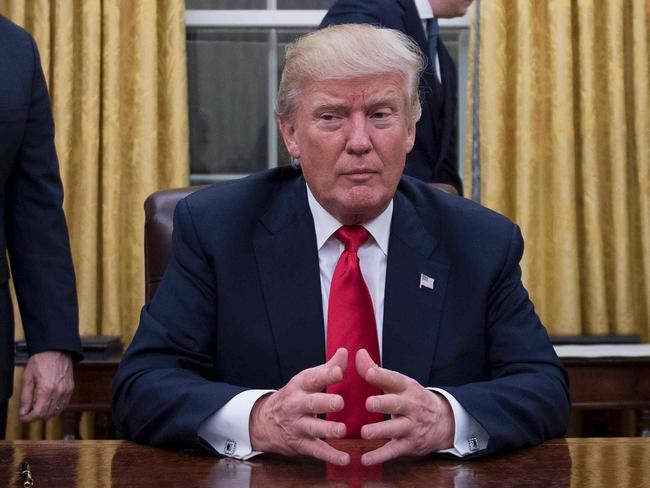
TRUMP’S SICK PLOY TO HIT ON FRIENDS’ WIVES
The book baldly refers to Trump as a “notorious womaniser” and then goes about explaining exactly how he pursues other women.
“Trump liked to say that one of the things that made life worth living was getting your friends’ wives into bed,” Wolff writes.
“In pursuing a friend’s wife, he would try to persuade the wife that her husband was perhaps not what she thought.
“Then he’d have his secretary ask the friend into his office; once the friend arrives, Trump would engage in what was, for him, more or less constant sexual banter. ‘Do you still like having sex with your wife? How often? You must have had a better f*** than your wife? Tell me about it. I have girls coming in from Los Angeles at three o’clock. We can go upstairs and have a great time. I promise ...’
“And all the while, Trump would have his friend’s wife on the speakerphone, listening in.”
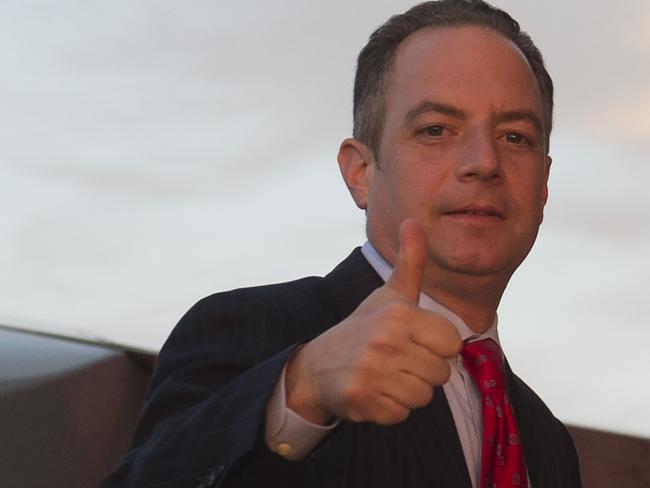
TOXIC INFIGHTING
Fire and Fury paints a picture of staff fighting for Trump’s attention, because that’s the only way you could influence him. After all, a memo is not going to do it.
Mainly, it was a three-way tussle inside the White House between the major power centres of chief strategist Steve Bannon, daughter Ivanka Trump and son-in-law Jared Kushner, and chief of staff Reince Priebus, each of whom would leak to the press against the other.
Trump shooting his mouth off on the phone meant his true thoughts about his advisers quickly circulated through Washington.
“Bannon was disloyal (not to mention he always looks like s**t). Priebus was weak (not to mention he was short — a midget). Kushner was a suck-up. [Sean] Spicer was stupid (and looks terrible too). [Kellyanne] Conway was a crybaby,” Trump would say, according to Wolff.
And his closest advisers returned serve and told others what they really thought about the President.
“He’s not only crazy, he’s stupid,” Trump’s business ally Tom Barrack said.
Treasury secretary Steve Mnuchin and Priebus called him an “idiot”; National Economic Council director Gary Cohn called him “dumb as s**t”; national security adviser HR McMaster called him a “dope”.
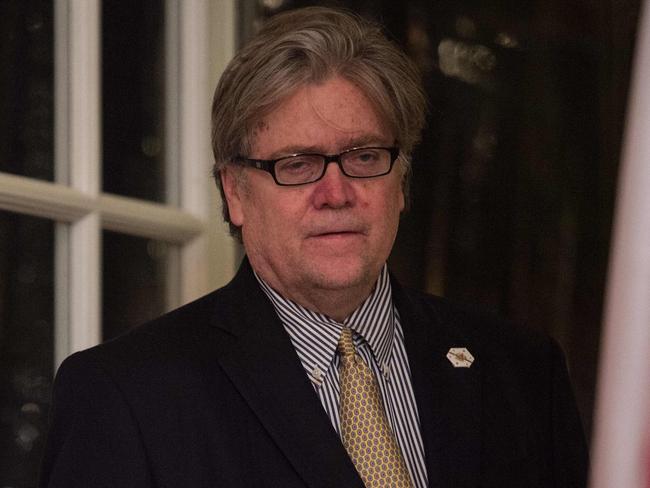
THE ADMINISTRATION HAD NO IDEA WHAT IT WAS DOING
Trump was swept to power as the anti-establishment president who would up-end the way politics was played. And that meant filling the White House with personalities who were not part of the Washington elite.
The big problem with that, as the book makes painfully clear, is that the people he installed were woefully inept at running an administration. Be it in media strategy, congressional tactics or policy development, Trump’s band of political rookies lurched from crisis to crisis with no clue about how to turn things around.
“Hardly a person in his innermost circle had ever worked in politics at the national level,” Wolff writes.
For Washington junkies, the book colours in much of the detail of how the White House dealt with some of its biggest scandals — from the Trump Tower meeting with the Russians, the firing of Federal Bureau of Investigation director James Comey and the self-immolation of short-lived communications director Anthony Scaramucci.
Perhaps the clearest example of the staff’s naivety was that Wolff — a man best known for writing a disputed biography of Rupert Murdoch — was allowed to assume a “semipermanent seat on a couch in the West Wing” after the inauguration.
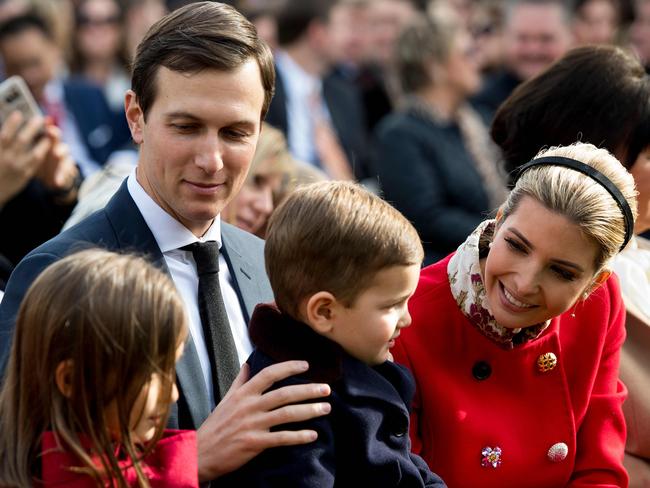
BANNON SAW HIMSELF AS THE WHITE HOUSE’S TRUE POWER SOURCE
Perhaps the major flaw of the book is that it reads very much like Bannon’s one-sided version of history.
It’s clear that Trump’s former chief strategist is Wolff’s primary source, as the story ends about the time that Bannon is kicked out of the White House.
Much of the book is taken up with Bannon’s vicious fights with his main rivals — Ivanka and Kushner, who Bannon labels “Jarvanka”.
In fact, the final third of the book reads much like the Bannon-versus-Jarvanka Show.
Bannon paints himself as the brightest person in the White House, scheming to outsmart the people standing in the way of his anti-establishment right-wing agenda.
Now he’s out of the White House, Bannon is telling others he doubts Trump will see his first term through.
“Steve Bannon was telling people he thought there was a 33.3 per cent chance that the Mueller investigation would lead to the impeachment of the President, a 33.3 per cent chance that Trump would resign, perhaps in the wake of a threat by the cabinet to act on the 25th Amendment (by which the cabinet can remove the president in the event of his incapacitation), and a 33.3 per cent chance that he would limp to the end of his term. In any event there would certainly not be a second term, or even an attempt at one,” Wolff writes.
JARVANKA’S REAL GOAL
Much like the rest of the Trump camp, Ivanka and Kushner did not believe he could win, but they saw the campaign as an opportunity to elevate themselves from “relatively obscure rich kids into international celebrities and brand ambassadors”.
They took on roles at the White House against the advice of “almost everyone they knew” because she had big ambitions of her own.
“Between themselves, the two had made an earnest deal: If sometime in the future the opportunity arose, she’d be the one to run for president. The first woman president, Ivanka entertained, would not be Hillary Clinton; it would be Ivanka Trump,” the book says.
WHAT REALLY DRIVES TRUMP
While the book describes Trump’s frustration at failing to pull off his agenda as president, ultimately he craves approval — from the voters, the top CEOs, the New York’s upper crust and the media.
“It was obvious to everyone that if he had a north star, it was just to be liked,” Wolff writes.
“He was ever uncomprehending about why everyone did not like him, or why it should be so difficult to get everyone to like him.”
It’s a view that Walsh shares: “He just fundamentally needs to be liked so badly that ... everything is a struggle for him.”



